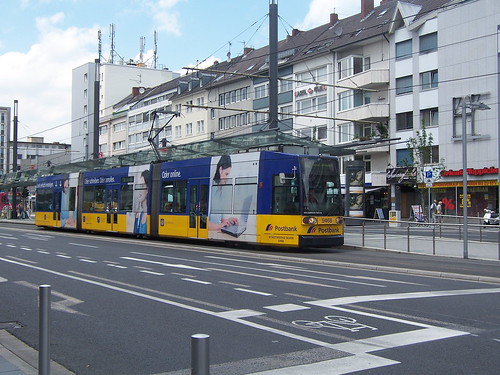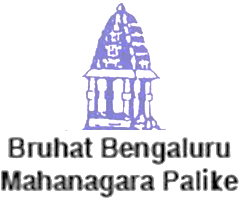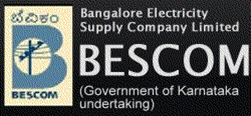HOT TOPICS
SPOTLIGHT AGENCIES
Traffic Congestion – Possible case for a PIL
Written By Naveen - 20 October, 2008
Traffic Bangalore CTTP BMTC BBMP BMLTA PIL Action BMRC
As outlined below, the formation of the prescribed bodies to tackle traffic congestion & to improve living conditions in the city was completed some time ago as recommended. Despite this, no concrete steps seem to be planned to stem the rot. The same old solutions continue to be doled out – the usual widening of roads after felling more trees & introducing more bus routes. These temporary solutions have been making things worse as widening roads invites more vehicles & the losers continue to be pedestrians & public transport users.
As I had mentioned in an earlier blog, the quality of street–based public transport can only be as good as traffic conditions will allow it to be. With average traffic speeds around 13.2 km/hr during peak hours in the city, fast, dependable quality bus services will never be possible unless buses are offered priority measures & are not subject to traffic delays. Unless measures to ensure this are taken, the larger business groups will shy away from city bus services if & when they are privatized.
At this stage, the other relevant bodies, such as BBMP & BMTC should be planning a complete shift out from the present stalemate, with the confidence of the public, but they seem to have pinned their hopes altogether solely on a Metro system that by itself, will never be able to solve the myriad transport problems.
The above seems adequate for filing a PIL against the State Government, questioning them as to why urgent steps are not being taken to address traffic & congestion problems in the city & to accord BMLTA with necessary powers to do the same expeditiously & on top priority.
KUIDFC (Karnataka Urban Infrastructure Development & Finance Corporation) had initiated a Comprehensive Traffic & transportation Plan (CTTP), which was carried out by Rail India Technical & Economic Services (RITES) & made public in October, 2007. (Please refer to relevant findings from the CTTP report reproduced below & discussions posted previously on Praja).
The CTTP report had reported the following relevant facts, which are undisputed :
1) Sec.3.9.5 – The average peak hour driving speed in the city was found to be 13.2 Kmph.
2) Sec.3.10.3 – Opinion Survey : Over 70 % of commuters feel that :
- buses are delayed, resulting in long waiting times
- the frequency is not adequate
- distance to bus stops should be less
69 % feel the numbers of routes are not adequate.
98 % of respondents are in favour of MRTS in city
81 % would like feeder bus service to MRTS stations
89 % would like to have parking facilities at MRTS stations
90 % prefer single ticketing system between bus and MRTS
3) Table 3.18 – Modal Share of Public Transport has dropped from 55% in 1982 to 45.7% in 2006. Sec.3.13.1.8 – This is further expected to fall unless adequate and quality public transport system is provided to the people of Bangalore. Share of two wheelers and cars in travel demand is disturbingly high. This trend needs to be arrested.
4) Sec.3.11.2 – Traffic Police have resorted to manage excessive traffic by introducing one way systems in central areas. 87 kms of roads converted to one–ways in the last two years alone.
5) Sec.3.13.1.3 – Traffic composition on roads indicates very high share of two wheelers. The share of cars is also growing. This indicates inadequate public transport system.
6) Sec.3.13.1.4 – Vehicle to Capacity ratios on most of the roads are more than 1.
7) Sec.3.13.1.4 .6 – Household surveys indicate high household incomes. So the vehicle ownership levels are increasing. In the absence of adequate and comfortable public transport system, people are using their personal modes creating not only congestion problems but also environmental pollution.
8) Sec.3.13.1.4 .7 – The household surveys indicate high share of work trips. This segment of travel demand needs to be mostly satisfied by public transport system. Considering the large employment centres being planned in the BMA, the public/mass transport system needs to be upgraded substantially.
9) Sec.3.13.1.9 – There is high pedestrian traffic in core area and some other areas in Bangalore. Footpath facilities are generally not adequate and their condition is deteriorating. Therefore up gradation of their facilities is very important.
10) Sec.3.13.1.10 – Parking is assuming critical dimensions in Bangalore. Parking facilities need to be augmented substantially. In the long run, city-wide public transport system needs to provide not only to reduce congestion on roads but also to reduce parking demand.
11) Sec.3.13.1.11 – Share of cycle traffic has declined over the years. This mode of transport needs to be promoted by providing cycle tracks along the roads.
12) Sec.3.13.1.13 – Large areas are being planned by BMRDA in the BMR. This is likely to increase interaction between Bangalore and suburban towns. There will be need to provide commuter rail services to these towns from Bangalore.
The Government of Karnataka, in its Order No. UDD 134 BMR 2006 (I), dated 8.3.2007, had created the State Directorate of Urban Land Transport [DULT] under the Urban Development Department.
BMLTA was created vide Government Order No. UDD 134 BMR 2006 (2), dated 9.3.2007 with the following functions :
- To co-ordinate all land transport matters in the BMR.
- To prepare detailed Master Plan for Transport Infrastructure based on the comprehensive Traffic and Transport Study for Bangalore.
- To oversee implementation of all transportation projects.
- To appraise and recommend transportation and infrastructure projects for bilateral / bilateral Central assistance.
- To function as empowered Committee for all Urban Transportation Projects.
- To initiate action for a regulatory framework for all land transport systems in BMR.
- To initiates steps, where feasible for common ticketing system.
- Take any other decision for the integrated urban transport and land use planning and Implementation of the projects.
The National Urban Transport Policy (NUTP–2006) had recommended setting up of Unified Urban Transport Authorities in cities with populations exceeding one million. The NUTP recommendations were to facilitate better coordination between planning & implementing agencies of urban transport programmes & projects, & integrating management of urban transport systems. See below for relevant extracts from NUTP–2006. Extracts from National Urban Transport Policy :
- A. Incorporating urban transportation as an important parameter at the urban planning stage rather than being a consequential requirement.
- B. Bringing about a more equitable allocation of road space with people, rather than vehicles, as its main focus.
- C. Encourage greater use of public transport and non- motorized modes by offering Central financial assistance for this purpose.
- D. Enabling the establishment of quality focused multi-modal public transport systems that are well integrated, providing seamless travel across modes.
- E. Establishing effective regulatory and enforcement mechanisms that allow a level playing field for all operators of transport services and enhanced safety for the transport system users.
- F. Establishing institutional mechanisms for enhanced coordination in the planning and management of transport systems.
- G. Introducing Intelligent Transport Systems for traffic management.
[PS: Removed formatting due to HTML problems - blr_editor]
COMMENTS

silkboard - 28 October, 2008 - 07:09
Bottomline - transportation is a basic need of urban or rural population. I would say that its my right to expect and demand a transportation arrangement from any where to anywhere at average speeds of 40 kmph for local distances, and 60 kmph over longer distances. Help fulfill my basic right to move.
At high level, two outcomes could be expected
- A regulatory authority for all transportation matters. I have no responsible place to go complain for my 2 hours that I waste commuting today at avg speeds of 15 kmph. Single body responsible for transportation arrangements, single place to go complain (or praise, when that day comes!)
- If govt says it can't commit to fulfilling my transportation needs, it must be made to explore ways of filling the gaps. Suggested way would be to explore help from private parties via opening up local urban transportation space for them.
Courts or government can recommend experts to plan and execute the needed reforms. We are not the experts, we are the aggrieved party.
Going to some details:
- 1) A possible outcome could be that BMLTA gets more powers. BMLTA (or equivalent, BMLTa or DULT reborn as a state level body for example) would be the single clearing house for all transportation projects.
So, for a big example: BMLTA would be the body to decide whether city needs an expressway to the new airport, or a BRTS corridor over NH7, or extension of Metro from Byappanahalli, or a High Speed Rail, or all of them. Right now, it is just not clear as to who owns connectivity to BIAL: BMLTA's HLTF, BBMP, BDA, BMRDA, KRDCL, NHAI, Minister in charge for Bangalore, or the Chief Minister. Who owns the BIAL commuter number predictions, and who decides how many modes are needed. Who will be responsible for mode exchange points, like say at making sure that I don't have to lug 5 suitcases from Metro at Minsk Square to CAT at Parade Grounds.
For small examples: BMLTA could turn down request for a flyover that doesn't include provisions for a bus bay under its belly, or a road widening project that doesn't include plans to control parking on the newly added road space.
If I go and ask for a bus stand to be moved from a messy location, I wouldn't have to go to BMTC, then BBMP, and the Traffic Police. I would address my greivance to BMLTA, and they will be answerable.
If I go ask BMTC about hey, whats happening to the BRTS, I would be asked to go talk to BBMP for BRTS in Central area of Bangalore, and then go ask BDA for BRTS on Outer Ring Road, and possibly BMRDA for BRTS on Peripheral Ring Road. In single transportation agency world, BMLTA will be the responsible body, the actual work may be executed by BDA/BMRDA and BMTC depending on their jurisdiction areas.
- 2) However, this could go deeper into local administrative reforms, and may lead us to ask for expediting implementation Kasturi Rangan committee report. Let it be.
- 3) Further, focusing the PIL sharply on local transportation, we could argue that ushering competition for local urban transport is the most practical solution (after creation of a regulatory body) out of present transportation mess. There is a lot of data on ground to suggest that BMTC can do better. The courts can either make BMTC do better, or realize that its not worth their and our time to chase them, would rather open the space up as part of broader transportation reforms.
There is some thinking to do here. But the point is, present system of running with plans (like executing CTTP) and taking short term (widening and flyovers) or slow (Phased Metro implementation over a decade, slow on mono, BRTS) measures are worsening the problem. Govt sure has its reasons for being slow or being unable to take long term measures besides Metro. The PIL will at least let us hear what their constraints are, and will make govt share its problems and frustrations with all.
We would need a meeting to work on this PIL, and lot of research as well. But some of us here are absolutely serious about doing one.

I am game. We would need more stats and research
silkboard - 21 October, 2008 - 05:07
Was thinking of some stats and research we would need to prepare the case for this PIL
- Average speed of traffic in Bangalore when compared to cities of similar size and density
- Comparison of BMLTA with Singapore's LTA
- London Bus (good example), and Delhi Transport corporation - load factors on buses compared to BMTC
- Amount of time it has taken for BBMP to execute works (bus bays) for BMTC
- Number of times BBMP, BMTC, Traffic Police meet, and average number of decisions taken in these meetings.
- Estimate on how much would public transport usage go up by if we had a responsible and powerful regulatory authority
Some key stats IMHO
- Estimated loss of revenue to state because BMTC or public transport carries only 34-37% of commuters and not 60-56% of them.
- Estimated usage of public transport when Metro arrives. How much would it go up by?
- Estimated losses due to low average speeds of commute - basically put a cost to our 2 hours spent each day on the roads
If 3-4 of us can join hands to do some research, I am game for sponsoring and working on this PIL.

silkboard - 22 October, 2008 - 05:29
Some more points to read and research
- Is the city following a developed plan (which would be CTTP) in the first place. For example, is ORR upgrade part of the CTTP?
- What is the process being followed for deviations from CTTP?
- What is the process state/city government is following for prioratizing all work laid out in CTTP? CTTP only talks of doing things in phases, there are no clear priorities for recomendations within a phase
- Feedback based on Impact measurement: Thikn of this - how has a project like Outer Ring Road, or Intermediate Ring Road impacted transportation landscape in south/east bangalore. Does the city collect any statistic that would form the feedback for going back and adjusting things in CTTP?
It looks it should be possible to prove that city is not taking transportation planning seriously, but it will require good reading, research and meetings with some people.
The other angle for the PIL could be our time. How much value do we put on our commute time? Is saving on this time something in public interest? Is it in public interest to expect better than 13.2 kmph which is the avg commute speed today? Measures taken in past 5-6 years how have those impacted the average commute time? gone down, right? Did it go down simply because the city got more people than it planned for? If yes, then how many people is the city planning for every year (to prove that it got more migrants than what it expected)?

Naveen - 22 October, 2008 - 16:11

Experience the changes over time
idontspam - 23 October, 2008 - 19:43
 2. Design standards have improved over the years. How many dirty lines do you see in the image below? Just one clean line on each side. if you built the tram line on the left side of the road you can extend the light pole to provide for the single line.
2. Design standards have improved over the years. How many dirty lines do you see in the image below? Just one clean line on each side. if you built the tram line on the left side of the road you can extend the light pole to provide for the single line.
 3. It does not get blocked if you dont physically barricade it. Even if you do you end up with the same situation in a BRT as well. Right now the outermost lane is hardly used anyway except for blocking traffic by blocking bus stands etc. Trams can transport large number of people (more than a janti vahana) the lane can be used by buses also. Combined (bus+tram), these 2 modes of transport can take away 2 lanes worth of traffic from the roads. Look at the example I have given in my previous post. If such connectivity was available I would never have to use a car to get to the CBD ever. (Thats mostly where I would use a car to go to beyond work.) It can curb drunken driving as there would be a viable neat transport service after my pub session.
Look how well the below tram is integrated with the road infrastructure. It does not look like an eyesore to me at all. I think our chaotic traffic and driving sense is far more of an eyesore.
3. It does not get blocked if you dont physically barricade it. Even if you do you end up with the same situation in a BRT as well. Right now the outermost lane is hardly used anyway except for blocking traffic by blocking bus stands etc. Trams can transport large number of people (more than a janti vahana) the lane can be used by buses also. Combined (bus+tram), these 2 modes of transport can take away 2 lanes worth of traffic from the roads. Look at the example I have given in my previous post. If such connectivity was available I would never have to use a car to get to the CBD ever. (Thats mostly where I would use a car to go to beyond work.) It can curb drunken driving as there would be a viable neat transport service after my pub session.
Look how well the below tram is integrated with the road infrastructure. It does not look like an eyesore to me at all. I think our chaotic traffic and driving sense is far more of an eyesore.
 4 & 5 read answer to 3 above. Speed of the tram depends on how you make right of way and how the system is designed. Trams are a recommended option to connect metro stations or TTMCs along arterial corridors. In the example in my previous post I was able to connect from BRV to hebbal TTMC and to yeswantpur metro and high density residential areas in between thereby serving a large catchment area without any major digging project or building more roads, moving more people than buses and saving the fuel import bill.
4 & 5 read answer to 3 above. Speed of the tram depends on how you make right of way and how the system is designed. Trams are a recommended option to connect metro stations or TTMCs along arterial corridors. In the example in my previous post I was able to connect from BRV to hebbal TTMC and to yeswantpur metro and high density residential areas in between thereby serving a large catchment area without any major digging project or building more roads, moving more people than buses and saving the fuel import bill.
PRAJA.IN COMMENT GUIDELINES
Posting Guidelines apply for comments as well. No foul language, hate mongering or personal attacks. If criticizing third person or an authority, you must be fact based, as constructive as possible, and use gentle words. Avoid going off-topic no matter how nice your comment is. Moderators reserve the right to either edit or simply delete comments that don't meet these guidelines. If you are nice enough to realize you violated the guidelines, please save Moderators some time by editing and fixing yourself. Thanks!





